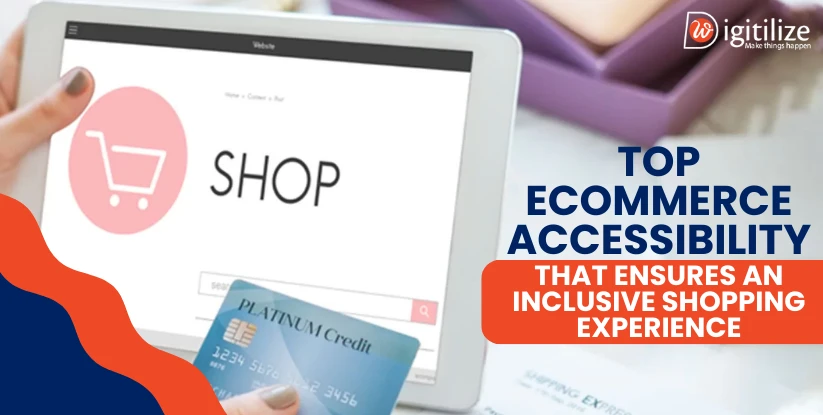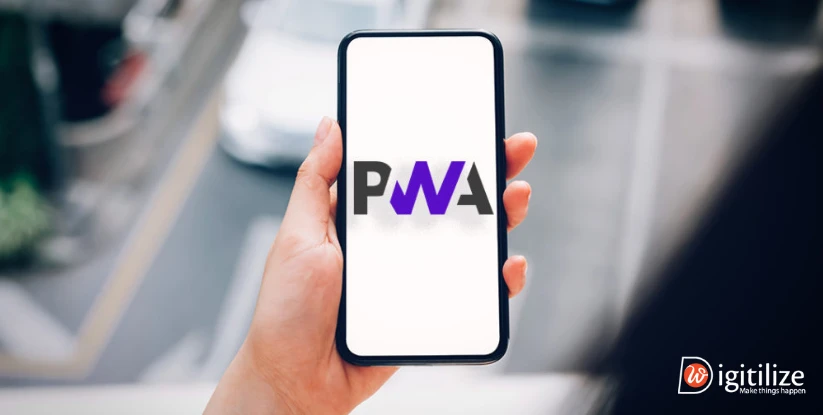Top Ecommerce Accessibility that Ensures an Inclusive Shopping Experience
 Due to the COVID-19 pandemic, ecommerce has grown rapidly over the past 10 years and has become even more important. As the ecommerce industry expands, consideration must be given to the accessibility of inclusive online shopping UK experiences. Accessibility of products, services, and information means making these resources available to people with disabilities. Top ecommerce accessibility that ensures an inclusive shopping experience is user-friendly for all users, irrespective of their cognitive, physical, or sensory capacities.
A sizable segment of the population could not be able to access or use ecommerce systems if this isn’t done. This post will address common consumer restrictions and solutions for each issue. Hence, online merchants might therefore ensure that every customer gets a warm and simple shopping experience.
Due to the COVID-19 pandemic, ecommerce has grown rapidly over the past 10 years and has become even more important. As the ecommerce industry expands, consideration must be given to the accessibility of inclusive online shopping UK experiences. Accessibility of products, services, and information means making these resources available to people with disabilities. Top ecommerce accessibility that ensures an inclusive shopping experience is user-friendly for all users, irrespective of their cognitive, physical, or sensory capacities.
A sizable segment of the population could not be able to access or use ecommerce systems if this isn’t done. This post will address common consumer restrictions and solutions for each issue. Hence, online merchants might therefore ensure that every customer gets a warm and simple shopping experience.
The significance of accessibility in ecommerce
Accessibility for ecommerce guarantees that all users, including those with impairments, can use websites and online businesses in the same way as everyone else. Not everyone can access online shopping experiences without accessible ecommerce design, which can result in lost revenue and a bad reputation for the firm. So, this emphasises the value of ecommerce for your company as well as how it may raise user engagement and customer happiness. Furthermore, improving accessibility in ecommerce designs may benefit SEO and usability as a whole.-
A rise in brand interaction
-
Improved rankings in searches.
-
Increased conversions in ecommerce.
-
A rise in website traffic
The best ways to improve the accessibility of your eCommerce website
 People often concentrate on the appearance and feel of their shop design when they are creating an online business. In addition to lovely typefaces and other visual impairment friendly websites components, they make use of vivid colours. That could distinguish your website from the competition, but it won’t guarantee that you can earn sales online. This is one of the top ecommerce accessibility that ensures an inclusive shopping experience. Hence, just as physical businesses build their spaces to accommodate a variety of patrons, including those with disabilities, so too should your online store be accessible to everybody. Here are a few excellent practices for building online businesses that are accessible.
People often concentrate on the appearance and feel of their shop design when they are creating an online business. In addition to lovely typefaces and other visual impairment friendly websites components, they make use of vivid colours. That could distinguish your website from the competition, but it won’t guarantee that you can earn sales online. This is one of the top ecommerce accessibility that ensures an inclusive shopping experience. Hence, just as physical businesses build their spaces to accommodate a variety of patrons, including those with disabilities, so too should your online store be accessible to everybody. Here are a few excellent practices for building online businesses that are accessible.
-
Design that Responds
-
Quick Loading Speed
 In the digital world, speed is crucial, and eCommerce is no different. Studies reveal that a considerable proportion of visitors will leave a website that loads slowly. Optimising page loading speeds is a top priority for eCommerce sites in order to keep potential consumers from leaving. Effective coding techniques, content delivery networks (CDNs), and picture compression can all help achieve this. This is one of the top ecommerce accessibility that ensures an inclusive shopping experience.
As a result, the conversion rate falls as the page load speed rises. Additionally detrimental to your SEO rank and searchability are slow-loading websites. For an ecommerce website, Google suggests a page load time of two seconds. However, in general, speed is advantageous.
In the digital world, speed is crucial, and eCommerce is no different. Studies reveal that a considerable proportion of visitors will leave a website that loads slowly. Optimising page loading speeds is a top priority for eCommerce sites in order to keep potential consumers from leaving. Effective coding techniques, content delivery networks (CDNs), and picture compression can all help achieve this. This is one of the top ecommerce accessibility that ensures an inclusive shopping experience.
As a result, the conversion rate falls as the page load speed rises. Additionally detrimental to your SEO rank and searchability are slow-loading websites. For an ecommerce website, Google suggests a page load time of two seconds. However, in general, speed is advantageous.
-
Simplified Procedure for Checkout
-
Various Methods of Payment
-
User Evaluations and Stars
-
VR and AR Technology
-
PWAs, or progressive web apps
 PWAs, or progressive web apps, provide an alternative to native mobile accessibility for UK shoppers and conventional webpages. With features like push notifications, offline capabilities, and quicker loading times, PWAs offer an experience more akin to an app. This invention offers a smooth e-commerce consumer experience by satisfying the needs of customers who want the convenience of applications without the requirement for downloads. This is one of the top ecommerce accessibility that ensures an inclusive shopping experience.
PWAs, or progressive web apps, provide an alternative to native mobile accessibility for UK shoppers and conventional webpages. With features like push notifications, offline capabilities, and quicker loading times, PWAs offer an experience more akin to an app. This invention offers a smooth e-commerce consumer experience by satisfying the needs of customers who want the convenience of applications without the requirement for downloads. This is one of the top ecommerce accessibility that ensures an inclusive shopping experience.
-
Virtual assistants and chatbots
-
Safety Procedures
-
Services for Subscription and Loyalty Programmes
-
Availability
FAQ
Frequently Asked Questions
Ensuring that all consumers can visit an online business without any barriers is the foundation of accessibility in ecommerce, which aims to provide inclusive experiences.
For those who use items in diverse ways, accessibility refers to usability. It is your responsibility to assist the team in viewing accessibility as a component of the user experience rather than as a set of specifications.
In order to be compliant with the Americans with Disabilities Act (ADA), ecommerce websites must provide features such as keyboard-only navigation and screen reader compatibility.
You run the danger of offending disabled consumers, getting into legal with Disabilities Act, and hurting your website's SEO.
To make product descriptions accessible to those with cognitive disabilities, platforms can use simple language, bullet points for key features, and provide clear instructions for purchasing.
Color contrast is crucial in ecommerce accessibility as it ensures that text and important elements are distinguishable for users with low vision or color blindness. It helps in readability and comprehension of content.

